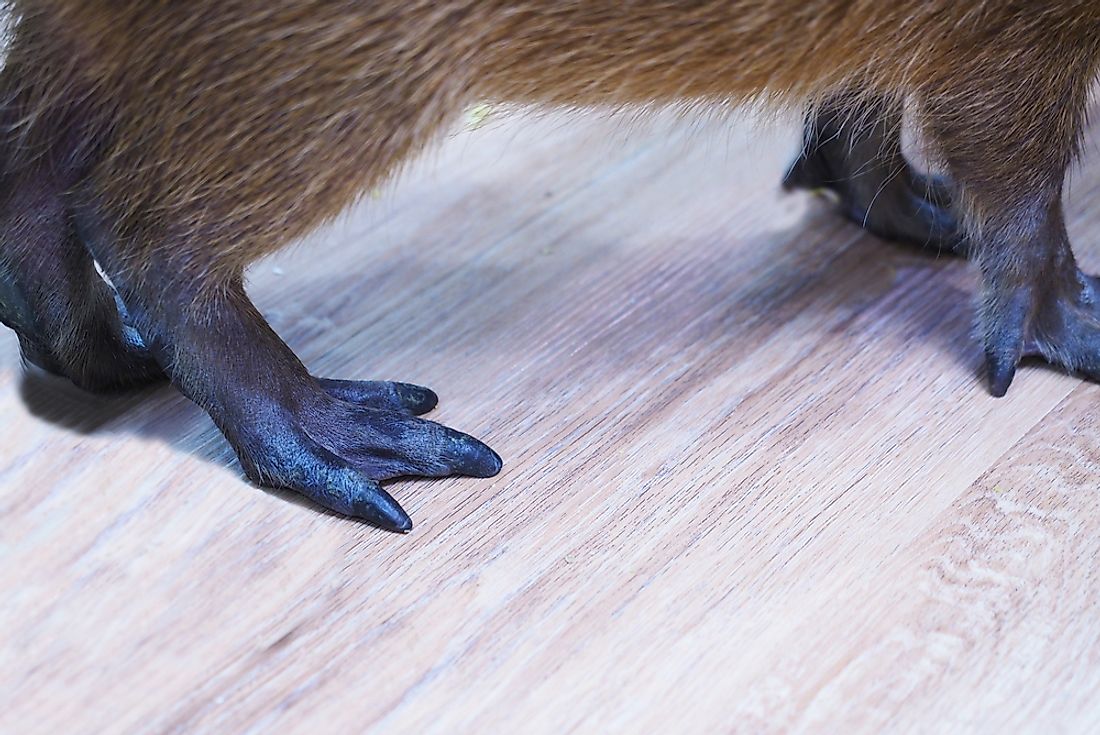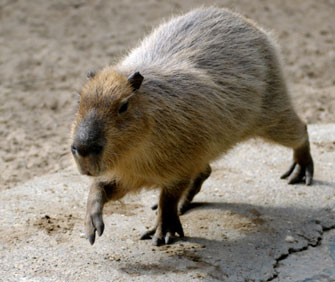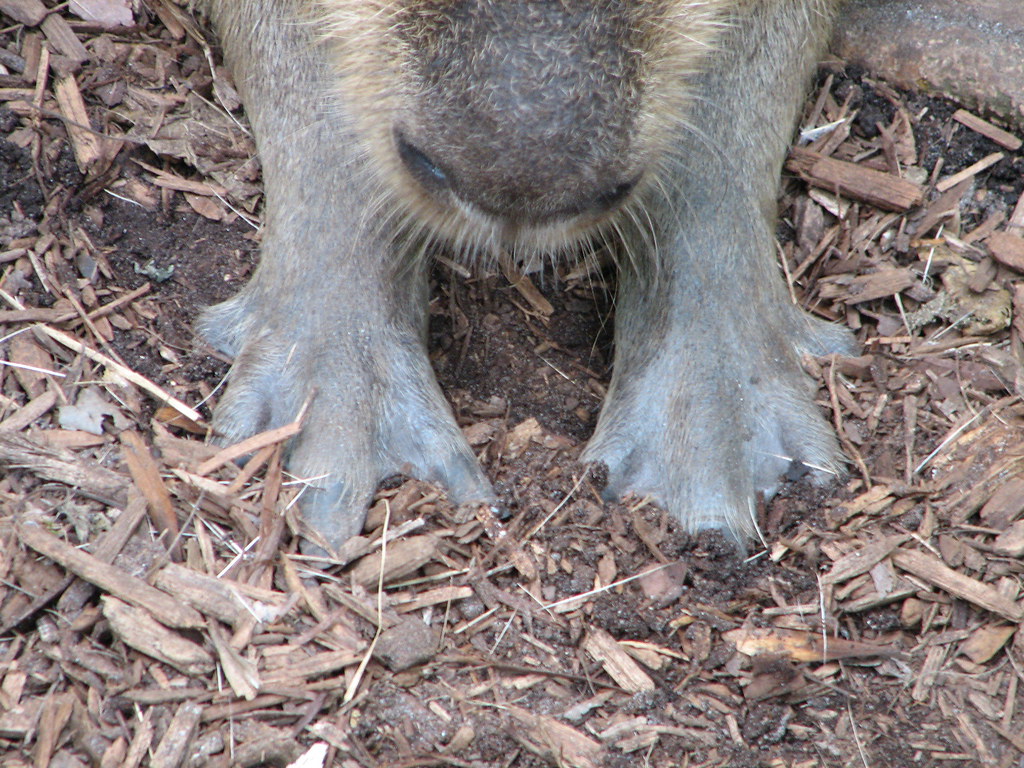When it comes to unusual animals, capybaras are at the top of the list. These fascinating creatures, native to South America, have captured the attention of animal enthusiasts around the world. One question that often arises is whether capybaras have webbed feet. In this article, we will explore the intriguing world of capybaras and uncover the truth about their unique physical feature. Prepare to be amazed by the wonders of these adorable creatures and discover the truth about their webbed feet.

Anatomy of a Capybara
Size and Appearance
Capybaras are the largest rodents in the world, with an average length of around 3 to 4 feet and a weight between 77 and 146 pounds. They have a unique appearance, resembling a mix between a large guinea pig and a pig. Capybaras have a stocky body with short legs, a round head, and a blunt snout. Their fur is coarse and usually varies in color from a reddish-brown to a grayish-brown, allowing them to blend in well with their natural surroundings.
Body Structure
The body structure of capybaras is well-suited for their semi-aquatic lifestyle. Their torso is elongated, allowing them to move efficiently through the water. The hind legs are slightly longer than the front legs, which gives them a sloping appearance when standing on land. This design helps them maintain balance and stability while on both land and in the water. The back is arched and covered in a layer of fat, providing buoyancy and insulation when swimming.
Feet and Toes
Unlike many other semi-aquatic animals, capybaras do not have webbed feet. Instead, they have partially webbed toes, which aid in their movement through water. Each of their four feet has four toes on the front and three on the back. The toes are slightly webbed, helping them paddle and gain traction while swimming. Their feet are also equipped with sharp, strong claws, which are useful for digging burrows, climbing riverbanks, and defending themselves from predators.
Webbed Feet in Aquatic Animals
Advantages of Webbed Feet
Webbed feet are a common adaptation seen in many aquatic animals. The webbing between the toes acts as a paddle, increasing surface area and propelling the animal forward in the water. This feature allows for efficient swimming and diving. The webbing also helps with buoyancy, as it creates more resistance against water, preventing the animal from sinking. Additionally, webbed feet aid in stability and maneuverability, enabling animals to navigate through different aquatic habitats with ease.
Examples of Aquatic Animals with Webbed Feet
Webbed feet are most commonly found in animals such as ducks, geese, swans, beavers, and otters. Ducks and other waterfowl rely on their webbed feet to help them swim and dive for food. Beavers use their webbed feet to construct elaborate dams and manipulate branches in water. Otters, with their specialized webbed paws, are known for their grace and agility in water. These examples highlight how webbed feet contribute significantly to the survival and adaptation of these aquatic animals.
Functions of Webbed Feet
Webbed feet serve several functions for aquatic animals. Firstly, they provide the necessary propulsion for swimming, allowing animals to move efficiently through the water. Secondly, webbed feet help in navigation by acting as paddles, enabling animals to change direction swiftly. They also aid in maintaining balance and stability on wet surfaces, such as slippery rocks or wet vegetation. Overall, webbed feet are a remarkable adaptation that facilitates the survival and success of animals living in aquatic environments.

Capybara’s Natural Habitat
Semi-Aquatic Lifestyle
Capybaras are native to South America and are well-known for their semi-aquatic lifestyle. They inhabit a variety of habitats, including wetlands, marshes, swamps, and riverbanks. These environments provide capybaras with both land and water resources, allowing them to thrive in diverse ecosystems. Capybaras spend a significant portion of their time in the water, using it for protection from predators, regulating body temperature, and finding food.
Relationship with Water
Water plays a crucial role in the lives of capybaras. They are excellent swimmers and can stay submerged for several minutes, relying on their senses to detect danger and locate resources. These social animals often gather in large groups near water bodies, reinforcing their sense of safety and enabling efficient communication. To maintain their health and well-being, capybaras require access to freshwater sources to drink, cool down, and groom.
Adaptations to Aquatic Environment
Capybaras have evolved several adaptations that enable them to thrive in their semi-aquatic habitat. Their partially webbed toes and strong claws allow them to navigate through water efficiently. The dense fur coat on their body acts as insulation, providing warmth after swimming and protecting them from temperature variations. Capybaras also have a specialized digestive system that allows them to extract and maximize nutrition from aquatic plants, making them well-adapted to their watery surroundings.
The Role of Feet in Aquatic Adaptation
Importance of Feet for Aquatic Life
The feet of semi-aquatic animals like capybaras play a critical role in their adaptation to aquatic habitats. Feet provide the primary means of propulsion and navigation while swimming, allowing animals to move with speed and precision. Furthermore, the structure of an animal’s feet determines its ability to maneuver in different aquatic environments, whether it be open water, marshes, or dense vegetation. The feet act as a crucial tool for survival and success in the water.
Capybara Foot Structure
While capybaras do not possess fully webbed feet, their partially webbed toes are a remarkable adaptation. The slight webbing between the toes allows capybaras to generate more force while paddling through the water, enhancing their swimming ability. Additionally, their strong claws provide effective grip and traction on various surfaces, aiding in tasks such as climbing riverbanks or digging burrows.
Comparisons with Webbed Feet
Although capybaras have partially webbed feet, they differ from animals with fully webbed feet, such as ducks or beavers. The webbing in capybara feet is less pronounced and does not extend to the tip of their toes. This unique foot structure is a testament to their semi-aquatic lifestyle, catering to their specific needs of swimming, navigating through vegetation, and thriving in both wet and dry environments.

Understanding Capybara Feet
Non-Webbed Feet in Capybaras
Capybaras have feet that are not fully webbed but possess partial webbing between their toes. This adaptation allows them to move with relative ease through the water, although not as effectively or efficiently as animals with fully webbed feet. Capybaras’ feet strike a balance between dexterity on land and proficiency in the water, catering to their specific requirements as semi-aquatic animals.
Toe Structure
The toes of capybaras play a crucial role in their overall foot structure. With four toes on the front feet and three on the back, capybaras have a unique arrangement that provides balance and stability. The webbing between the toes adds surface area, allowing them to paddle effectively while swimming. Furthermore, their strong claws aid in gripping surfaces and provide protection against potential threats. Capybara toes are the foundation of their foot structure, enabling them to excel in diverse environments.
Foot Function
The feet of capybaras serve multiple functions depending on the terrain they are traversing. On land, their feet are well-adapted for walking and running, with the sturdy claws providing traction on various surfaces. In the water, the slight webbing between their toes enhances their paddling ability, enabling them to move efficiently. Overall, capybara feet are versatile and play a crucial role in their ability to thrive in both aquatic and terrestrial environments.
Capybara Swimming Ability
Capybara as Swimmers
Capybaras are excellent swimmers and spend a significant amount of their time in the water. Their powerful limbs and streamlined body shape allow them to glide effortlessly through the water, showcasing their natural swimming ability. Capybaras can dive and stay submerged for several minutes, skillfully utilizing their partially webbed feet to maneuver through various aquatic habitats.
Techniques Used
When swimming, capybaras employ a combination of techniques to optimize their movement in the water. They use a paddling motion with their partially webbed feet, generating forward propulsion. The streamlined shape of their body minimizes drag, allowing them to move swiftly. Capybaras also use their tail as a rudder, aiding in navigation and maintaining balance while swimming.
Speed and Agility in Water
While capybaras may not be the fastest swimmers compared to marine animals like dolphins or seals, they exhibit remarkable speed and agility in the water. Their robust physique and well-adapted feet allow them to reach speeds of up to 25 miles per hour when swimming, making them quite proficient in evading predators and exploring their aquatic surroundings.

Grooming and Cleaning Behaviors
Maintenance of Feet
Capybaras have a robust grooming and cleaning routine to ensure the health and hygiene of their feet. They will often use their teeth and claws to remove any dirt or debris that may accumulate between their toes or under their nails. Regular grooming of their feet helps prevent infections and keeps their feet in optimal condition for swimming and traversing various terrains.
Cleaning Techniques
Capybaras employ several techniques to clean their feet. They may use their front paws to lick and nibble at their toes to remove any dirt or foreign objects. Additionally, they may rub their feet against rough surfaces or vegetation to help dislodge debris. Capybaras are quite thorough in their cleaning rituals and take great care to ensure their feet remain clean and free of any potential irritants.
Importance of Cleanliness
Maintaining clean feet is crucial for capybaras. Clean and well-groomed feet help prevent infections, fungal growth, and other foot-related health issues that could hinder their ability to swim or move effectively. Proper hygiene ensures that capybaras can continue to thrive in their semi-aquatic habitats, remaining healthy and agile in both land and water environments.
Adaptations for Water Travel
Other Aquatic Adaptations
Capybaras possess additional adaptations that enhance their ability to travel and survive in water. For instance, their dense fur coat helps them retain heat and provides insulation when swimming in cooler temperatures. Capybaras also have a specialized nasal structure that allows them to submerge their heads while still being able to breathe. These adaptations further contribute to their success in their semi-aquatic lifestyle.
Nose and Ears
The nose and ears of capybaras are adapted to their aquatic lifestyle. Their nostrils and ears are strategically positioned on the top of their head, allowing them to partially submerge themselves while still being able to breathe and listen for potential threats. This arrangement allows capybaras to stay alert and aware of their surroundings in both aquatic and terrestrial environments.
Floating and Buoyancy
Capybaras have a natural ability to float, thanks to their body structure and buoyant properties. The layer of fat beneath their skin acts as a flotation device, allowing them to remain effortlessly buoyant in the water. This buoyancy not only conserves energy but also aids in skimming across the water’s surface, making capybaras agile and adaptable swimmers.

Foot Structures in Related Species
Similar Species and Their Feet
Capybaras are not the only semi-aquatic animals with unique foot structures. Similar species, such as beavers and otters, also exhibit fascinating adaptations related to their feet. Beavers have fully webbed feet with strong claws that allow them to construct elaborate dams and manipulate objects in water. Otters possess fully webbed paws with long digits, which provide exceptional dexterity and propulsion when swimming. These related species showcase the incredible diversity of foot structures among semi-aquatic animals.
Rodents and Semi-Aquatic Life
Many rodents, including capybaras, have embraced a semi-aquatic lifestyle, demonstrating adaptations that suit their unique needs. The variety of foot structures in rodents reflects the different environments they occupy. Some rodents, like the muskrat, possess partially webbed feet similar to capybaras, while others have claws designed for digging or climbing. These adaptations allow rodents to exploit a wide range of habitats, highlighting their ability to adapt and thrive in various ecosystems.
Comparison with Other Animals
When comparing capybaras’ feet to fully webbed feet found in animals like ducks or swans, it is evident that capybaras have a more flexible foot structure. While fully webbed feet provide excellent propulsion and maneuverability in the water, capybaras’ partially webbed toes offer a balance between land and water capabilities. The unique characteristics of their feet make capybaras successful in both aquatic and terrestrial habitats.
Conclusion
Final Thoughts
Capybaras are fascinating creatures with remarkable adaptations that allow them to excel in their semi-aquatic lifestyle. Their size and appearance, along with their body structure and partially webbed feet, contribute to their ability to thrive in diverse environments. Capybaras’ natural habitat incorporates their strong relationship with water, and their feet play a vital role in their adaptation to this unique lifestyle.
Understanding Capybara Feet
Although capybaras do not possess fully webbed feet, their partially webbed toes and foot structure are essential for their swimming ability, stability, and agility. Their feet play a significant role in their adaptation to both land and water, enabling them to move efficiently and thrive in diverse habitats.
Appreciating Their Adaptations
The adaptations exhibited by capybaras, including their unique foot structure, demonstrate the incredible diversity and complexity of nature’s design. By understanding and appreciating these adaptations, we can further appreciate the wonders of the animal kingdom and the fascinating ways in which different species have evolved to thrive in their respective environments. The capybara’s feet are a testament to their remarkable adaptation to a semi-aquatic lifestyle and provide insights into the incredible resilience and versatility of these fascinating creatures.



